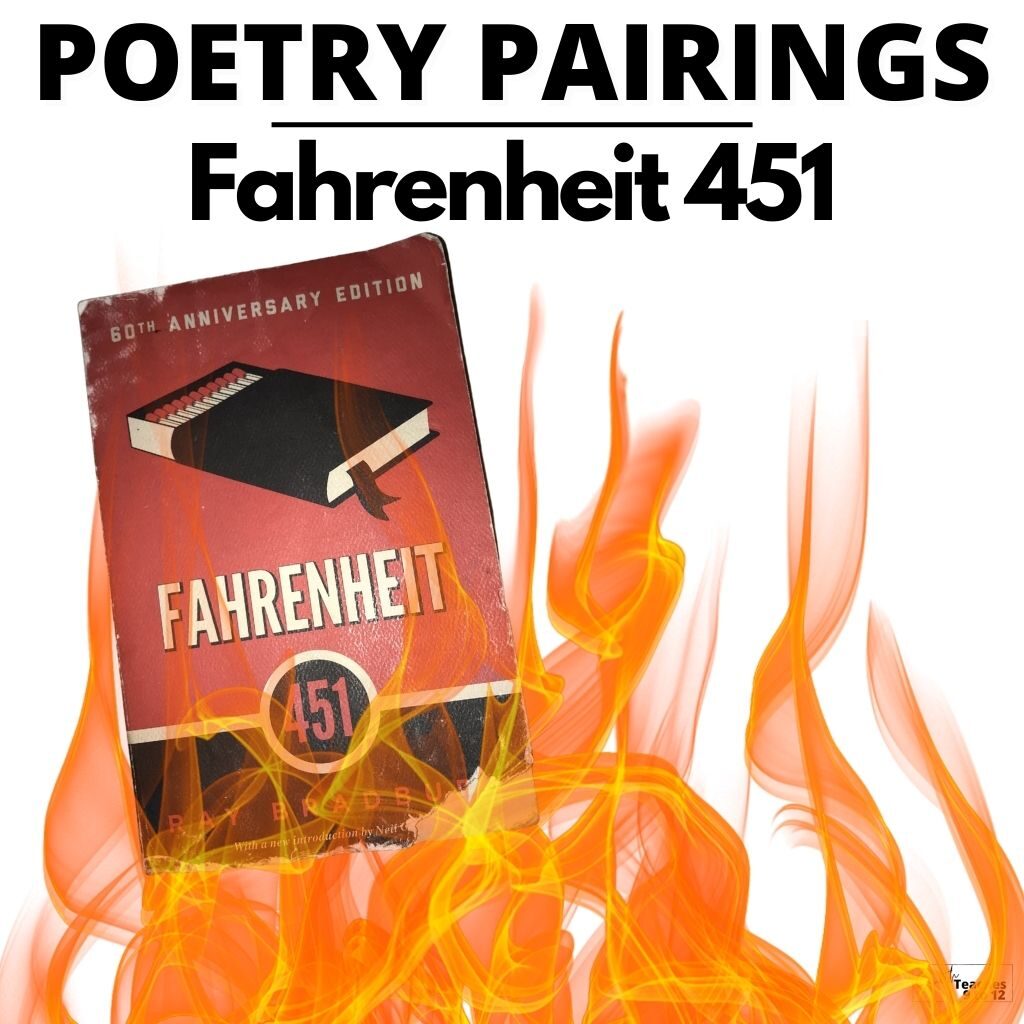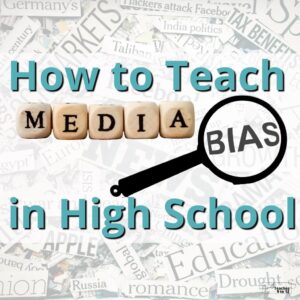Sharing is caring!
If ever there was a novel to pair with poetry then Ray Bradbury’s Fahrenheit 451 is it! With its abundance of figurative language the novel, poetry pairings for Fahrenheit 451 will only deepen any student’s study of the novel.
If you are studying Fahrenheit 451 by Ray Bradbury you likely include “Dover Beach” by Matthew Arnold since that’s featured in the novel. Adding additional poetry pairings for can help students to examine issues in the novel a bit more closely and to do so in comparison with contemporaneous and/or contemporary work.
With that in mind here are 10 poems you can use to explore theme, character, and some big ideas in the novel!
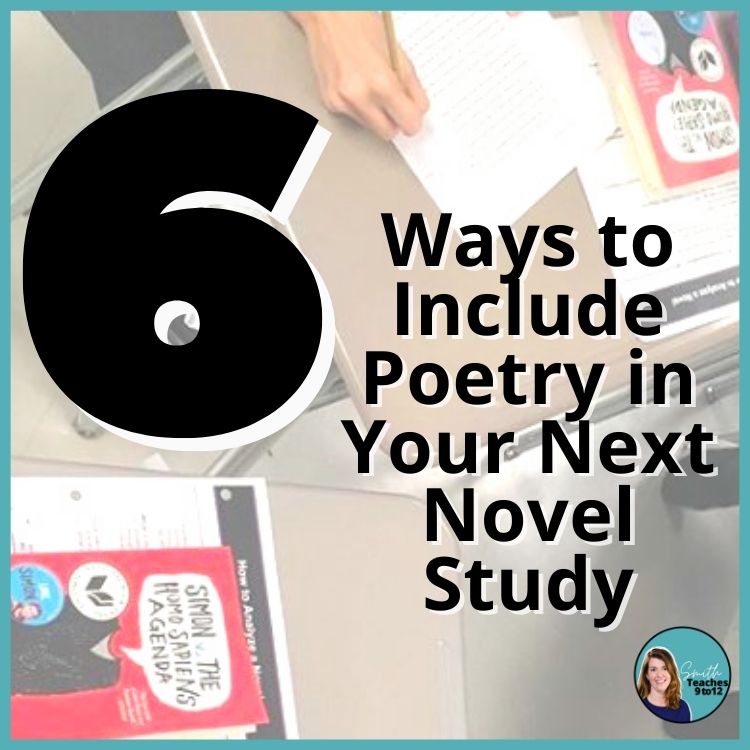
Wondering how to use these poems? Check out this post with many ways to incorporate poetry into ANY fiction lesson or unit!
Theme – Reading, Censorship, Power of Books
Theme is an easy way to do poetry pairings for Fahrenheit 451. These themes might also play into the essential questions you have set up for your course or unit related to oppression, censorship, technology, or even reading in general.
With these big ideas in mind, adding in poetry pairings can provide depth and breadth beyond the novel.
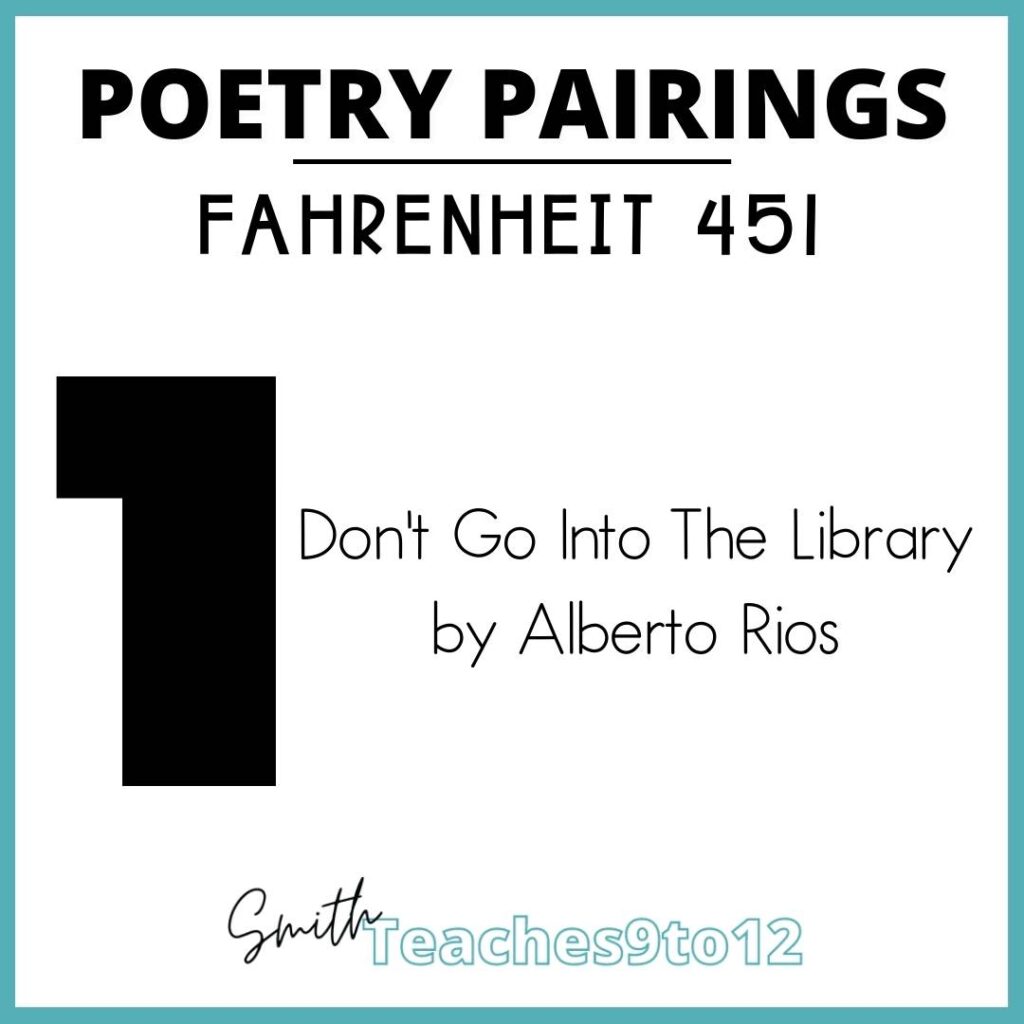
Don’t Go Into The Library is a 2017 poem that, while aimed at children with a simplistic narrative, focuses on reverse psychology would be an ideal opening poem to study in conjunction with Fahrenheit 451. The poem speaks of the ‘dangers’ of books (and libraries) to expand knowledge; the final two couplets read: “The library is dangerous, full / Of answers. If you go inside, / You may not come out / The same person who went in.”
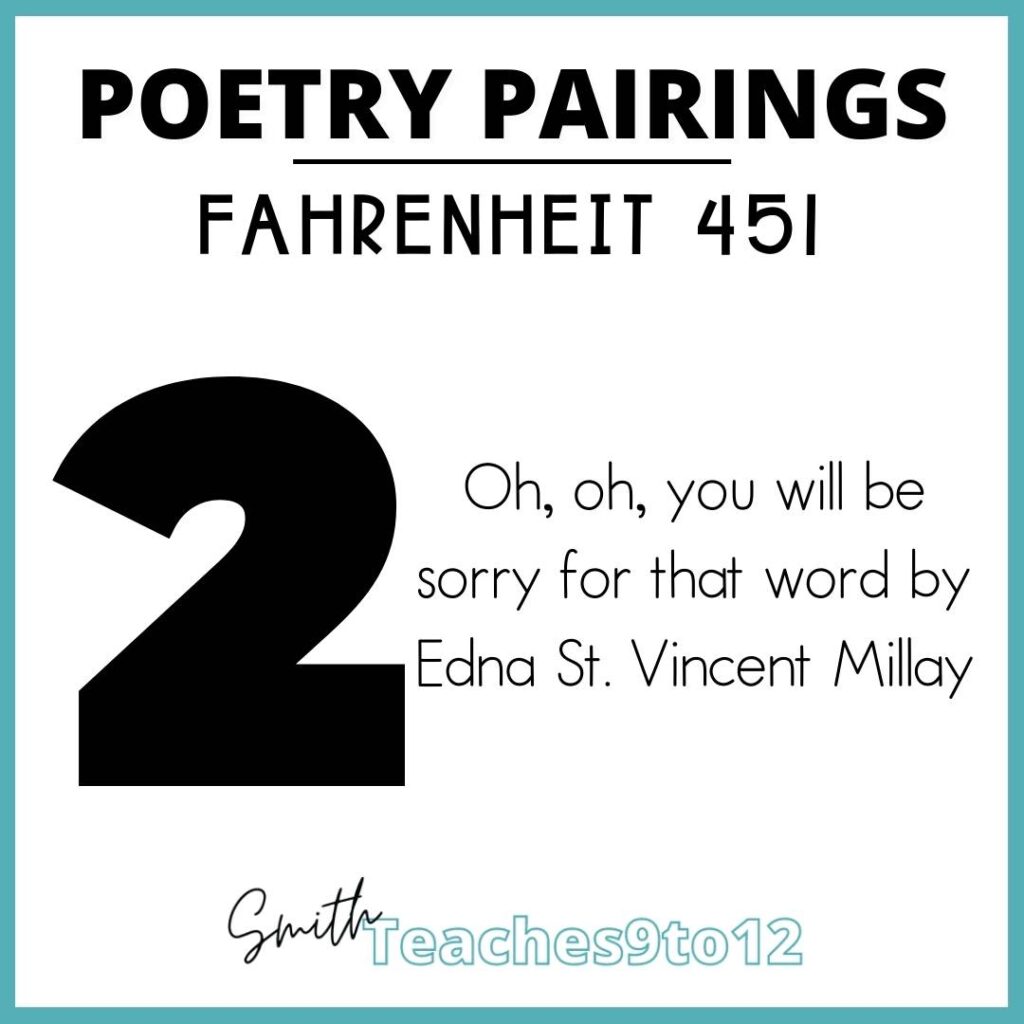
This poem by Pulitzer Prize winning poet Edna St. Vincent Millay was written before Bradbury’s novel but the poem’s focus on reading and having women avoid books in order to be ‘better’ is a great fit with the novel.
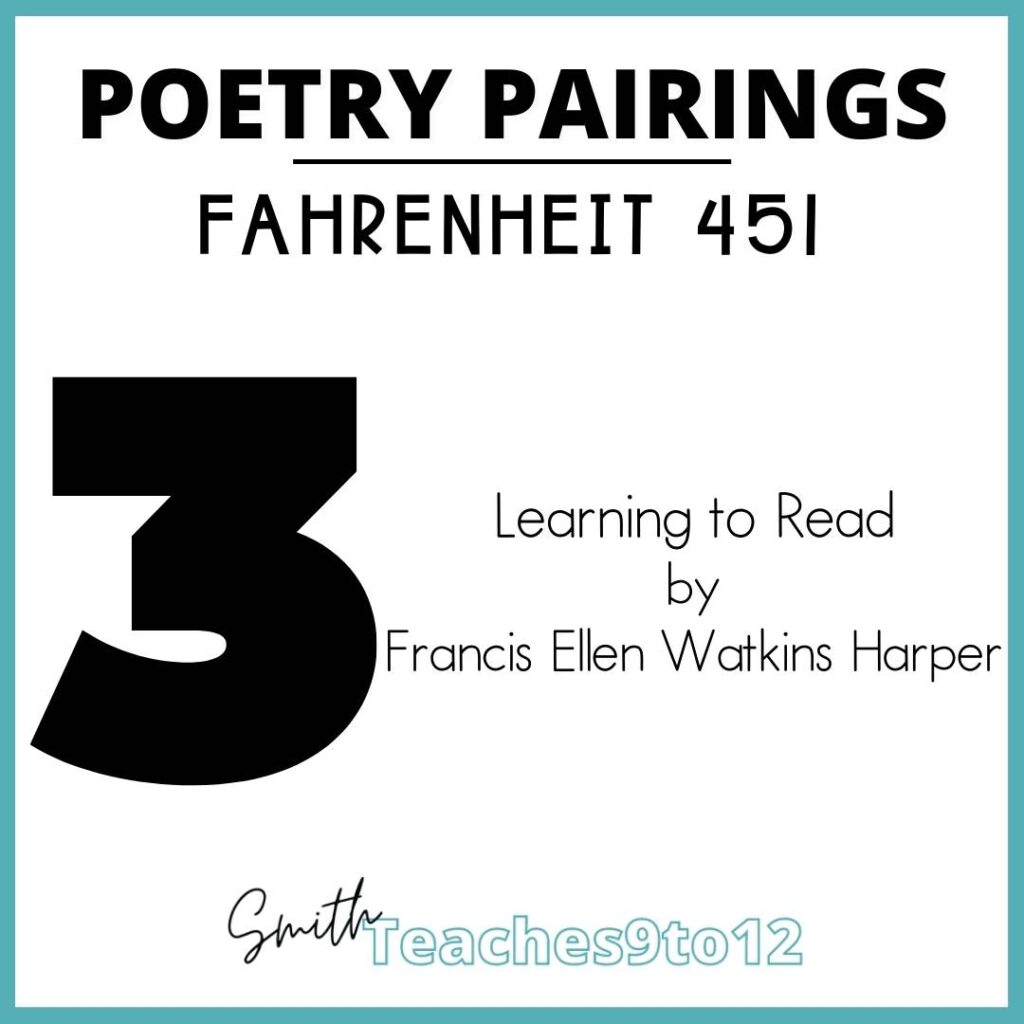
This poem by African-American poet Francis Ellen Watkins Harper, writing in the late-19th and early-20th century, focuses on the importance of reading and one person’s desire to learn to read. The poem can work as a response to action within Bradbury’s novel.
Check out this ready-made lesson to complete a comparison of this poem or to practice the skills to effectively compare and contrast featuring an introduction to Francis Ellen Watkins Harper and her work, plus two other poets!
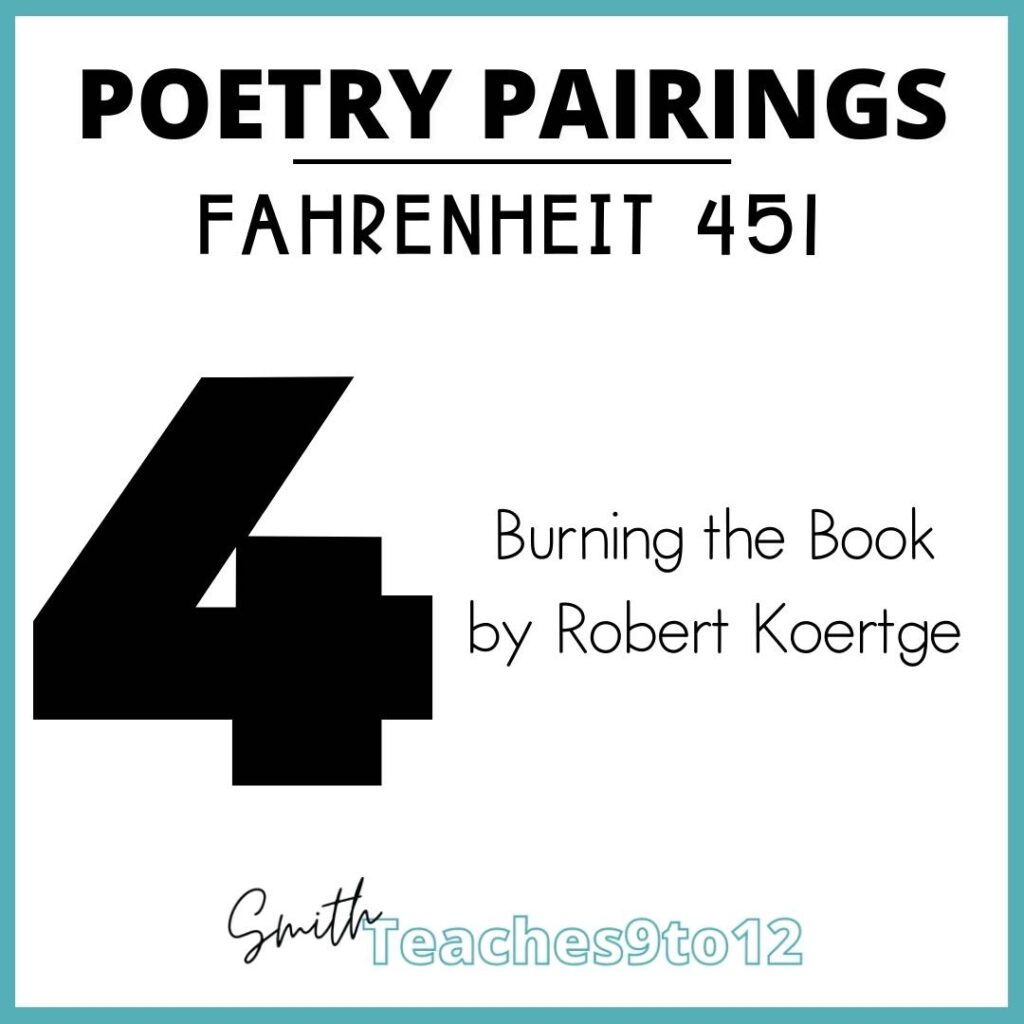
This poem has a narrator who is deliberately burning a book of old love poems. The beauty of the poem is in the final image where the narrator joins neighbors while it snows and they watch the children with their mouths open trying to catch snowflakes. The image is heightened with the narrator’s observation that he also sees “nouns” land on the children’s tongues!

This poem by well-known takes a different approach to burning books when a poet notices his books of poetry are not on the list of books to be burned. He writes a letter to the powers that be arguing that his books should also be included… “burn me!” he orders in the letter.
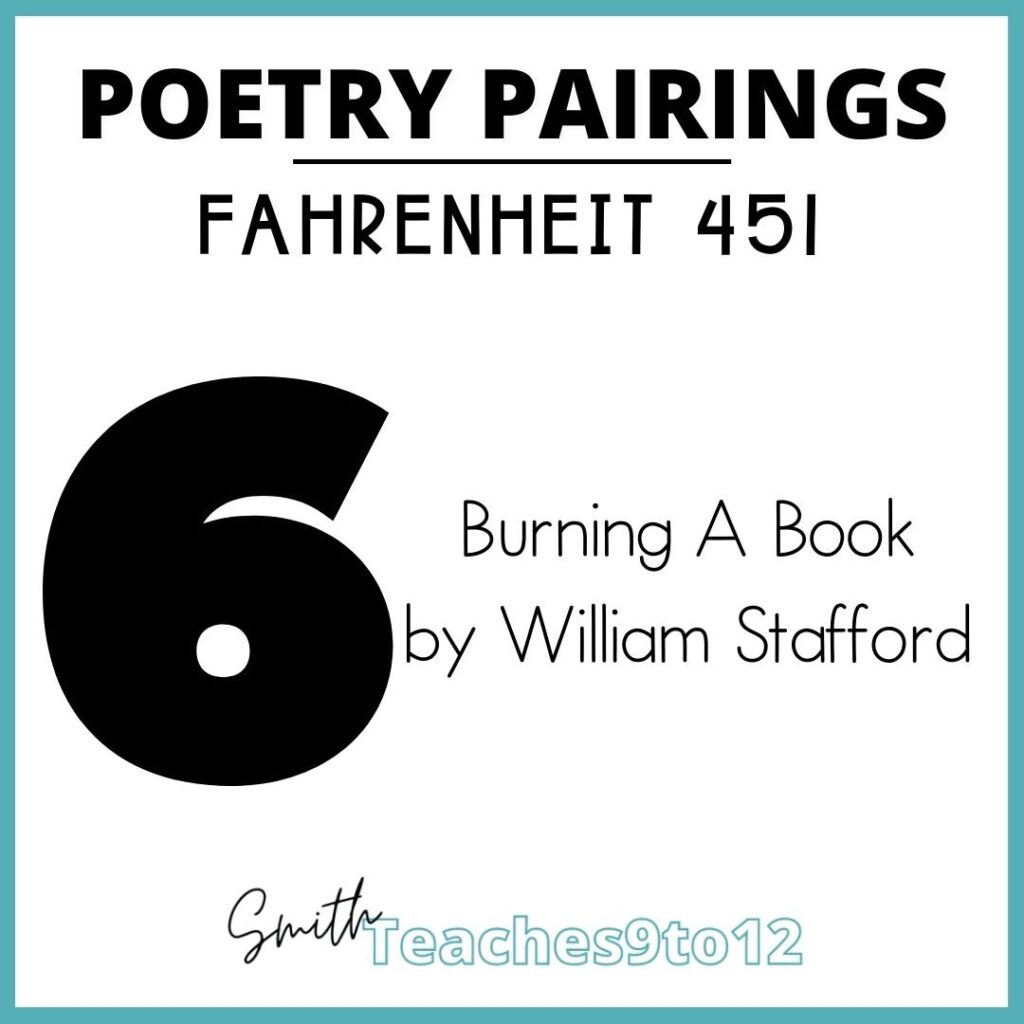
This 1986 poem is a popular choice and in fact features as part of the Common Lit collection. While the poem is listed as ideal for sixth grade, it would make for a strong introductory poem to use in a unit focused on Bradbury’s novel. You can check it out on Common Lit where you’ll also find annotations and guiding questions for study.
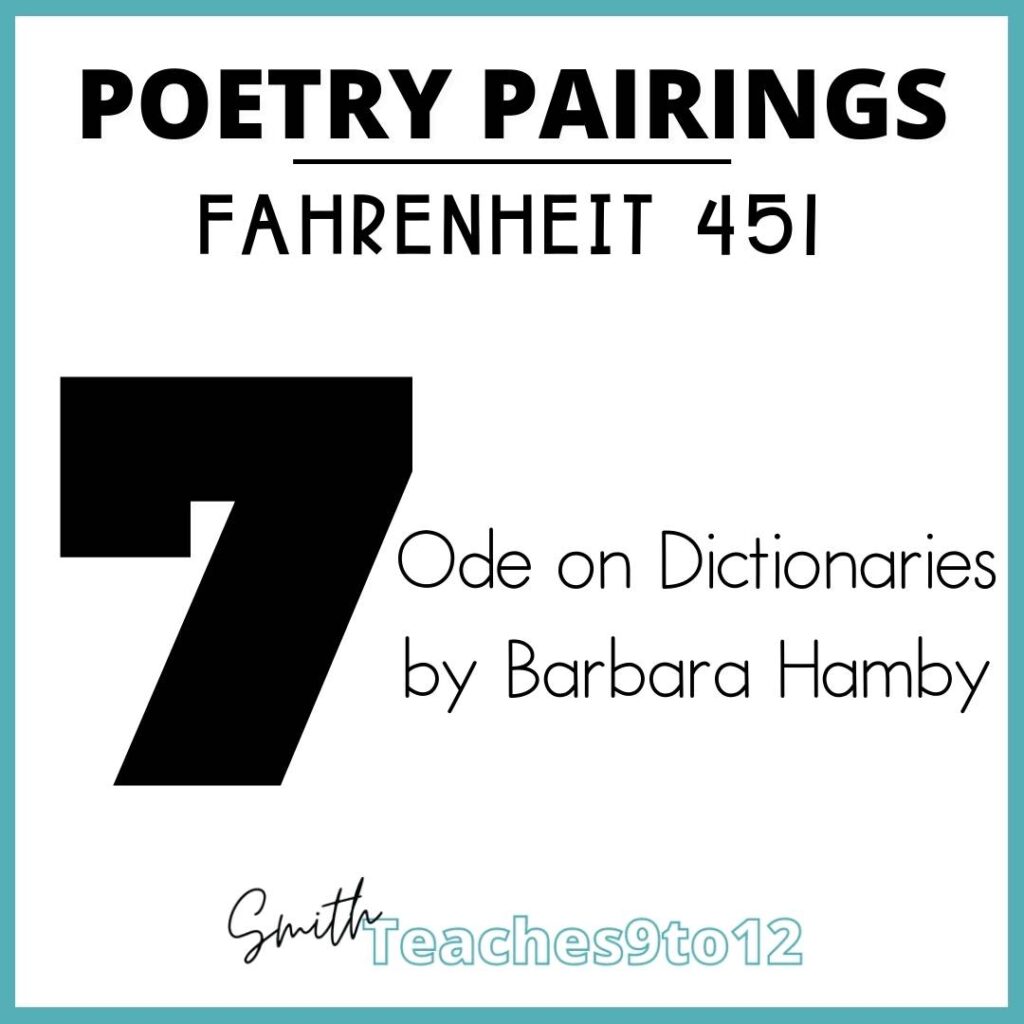
This poem from 2009 runs through the alphabet and highlighting contents for each letter from the dictionary. It’s amusing and would work as a study of odes as a form, plus relate to the significance of books in the novel.
A complementary lesson to this poem for students to learn about the content and structure of odes. Check out this full ready-made time-saving lesson all about odes.
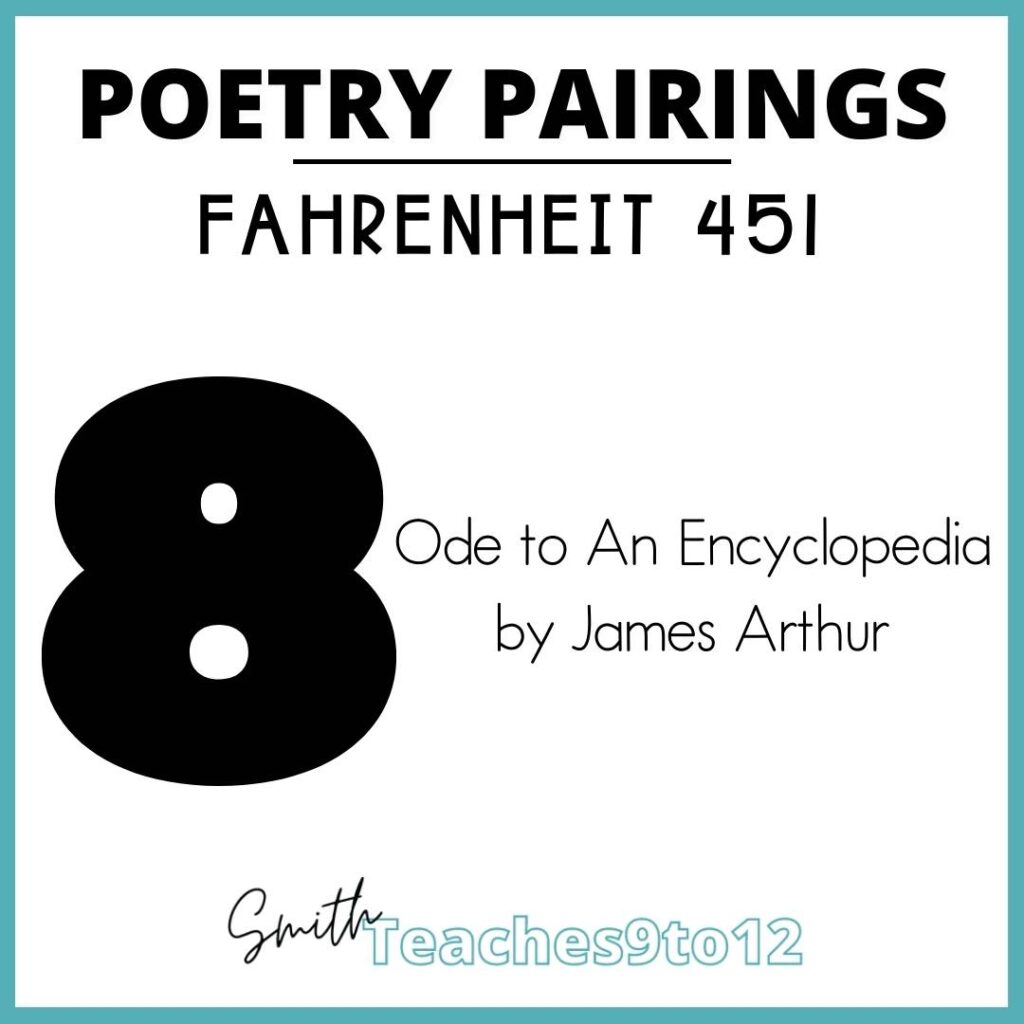
This 2015 poem as the poet explains is about “the openness of the open field; when we’re children, we can still believe that we’ll have time to go everywhere, see everything, and do it all.” This poem would work as a study in form, a connection to the novel’s focus on books, or as a connection to the various characters trying to protect books and knowledge in the novel.
Character examination and comparison

This poem from 1915 would work well to Montag’s struggles in his thoughts. The opening stanza asks: “What kind of thoughts now, do you carry / In your travels day by day / Are they bright and lofty visions, / Or neglected, gone astray?”

This final entry in these poetry pairings for Fahrenheit 451 is one to explore Mildred Montag. With Mildred’s total absorption into television in the novel, this poem can open up the discussion of media, technology, Mildred’s (and our!) reliance on it all too!
How To Include These Poems
- Choose 2-3 to start your study of the novel. Use them to predict the content or theme(s) of the novel.
- Include different poems throughout the unit. The character poems would work well once students have made progress in the novel.
- Choose a few poems to close out the unit to have students identify the connections. This works really well as a final assignment in written or presentation form for students to demonstrate their knowledge and understanding, plus their ability to apply it in order to make connections to secondary texts.
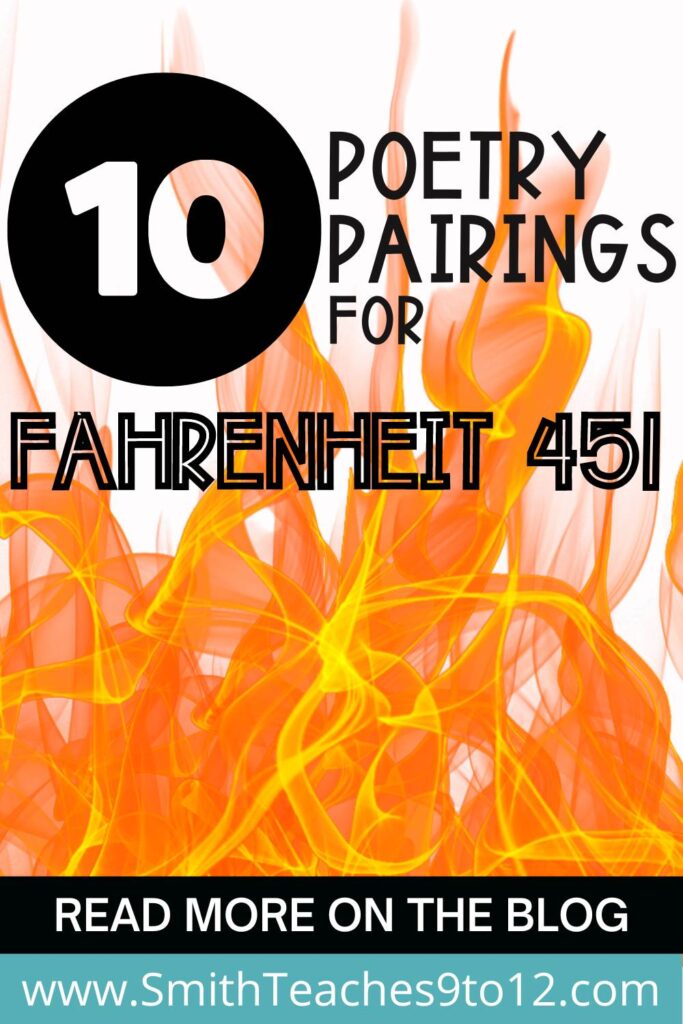
Activities With These Poems
- Create a gallery walk with several poems and have students wander to record their connections to the play.
- Complete a Venn diagram with one poem. Assign it to a student or a pair of students to complete.
- Create small groups that explore 2-3 poems. What do they see in common with the poems and the novel? Record their connections on big paper. Complete a ghost walk to check out other groups’ work.
Including poetry in your novel study is a great way to expand the unit with different and more diverse voices. It also extends student analysis and understanding of the text as well as their abilities to make connections between texts. These 10 poetry pairings for Fahrenheit 451 by Ray Bradbury are designed to do all of that and more!

Check out these other posts with poetry pairings for different texts:
- Poetry Pairings for Romeo and Juliet
- 10 Poetry Pairings for Of Mice and Men by John Steinbeck
- Poetry Pairings for Shakespeare based on themes
Looking to add more poetry into your classroom, whether it’s for a fiction-focused unit or not? Check out this FREE poetry e-book with poems for every month of the year, including eight activities to coincide with any poem!

